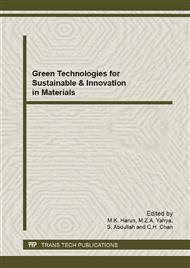p.71
p.79
p.86
p.92
p.104
p.109
p.118
p.125
p.130
Analysis of Delaminated Composite Plates
Abstract:
A mathematical model for plates with partially delaminated layers is presented to investigate their behavior. In this formulation account is taken of lateral strains. The principal advantage of the element is that it allows the modeling of delamination anywhere in the structure. The region without delamination is modeled to carry constant peel and shear stresses; while the region with delamination is modeled by assuming that there is no peel and shear stress transfer between the top and bottom layers. Numerical results of the present model are presented and its performance is evaluated for static problems. Laminated beams and plates are often used as primary load-carrying structures. However, the mechanical properties of composite materials may degrade severely in the presence of damage. One of the common types of damage modes in laminated composites is delamination. The presence of delamination is one of the most prevalent life-limiting failure modes in laminated composite structures. Many researchers had been studying the effect of delamination. Wee and Boay [1] developed an analytical model to predict the critical load of a delaminated composite laminated beam. Lee et al. [2] investigated the buckling behavior of the beam plate with multiple delaminations under compression. Kapania and Wolfe [3] examined the buckling behavior of a beam plate with two delaminations of equal length. Wang et al. [4] improved the analytical solution by including the coupling between the flexural and axial vibrations of the delaminated sub-laminates. Lee et al. [5] studied a composite beam with arbitrary lateral and longitudinal multiple delamination. Finite-element methods have been developed using the layerwise theory by Kim et al. [6]. Tan and Tong [7] developed a dynamic analytical model for the identification of delamination embedded in a laminated composite beam. To investigate the effects of delamination of a plate layers, a finite-element model is developed. Both displacement continuity and force equilibrium conditions are imposed between the regions with and without delamination. The accuracy of the approach is verified by comparing results with previously published data.
Info:
Periodical:
Pages:
104-108
Citation:
Online since:
April 2013
Authors:
Keywords:
Price:
Сopyright:
© 2013 Trans Tech Publications Ltd. All Rights Reserved
Share:
Citation:


